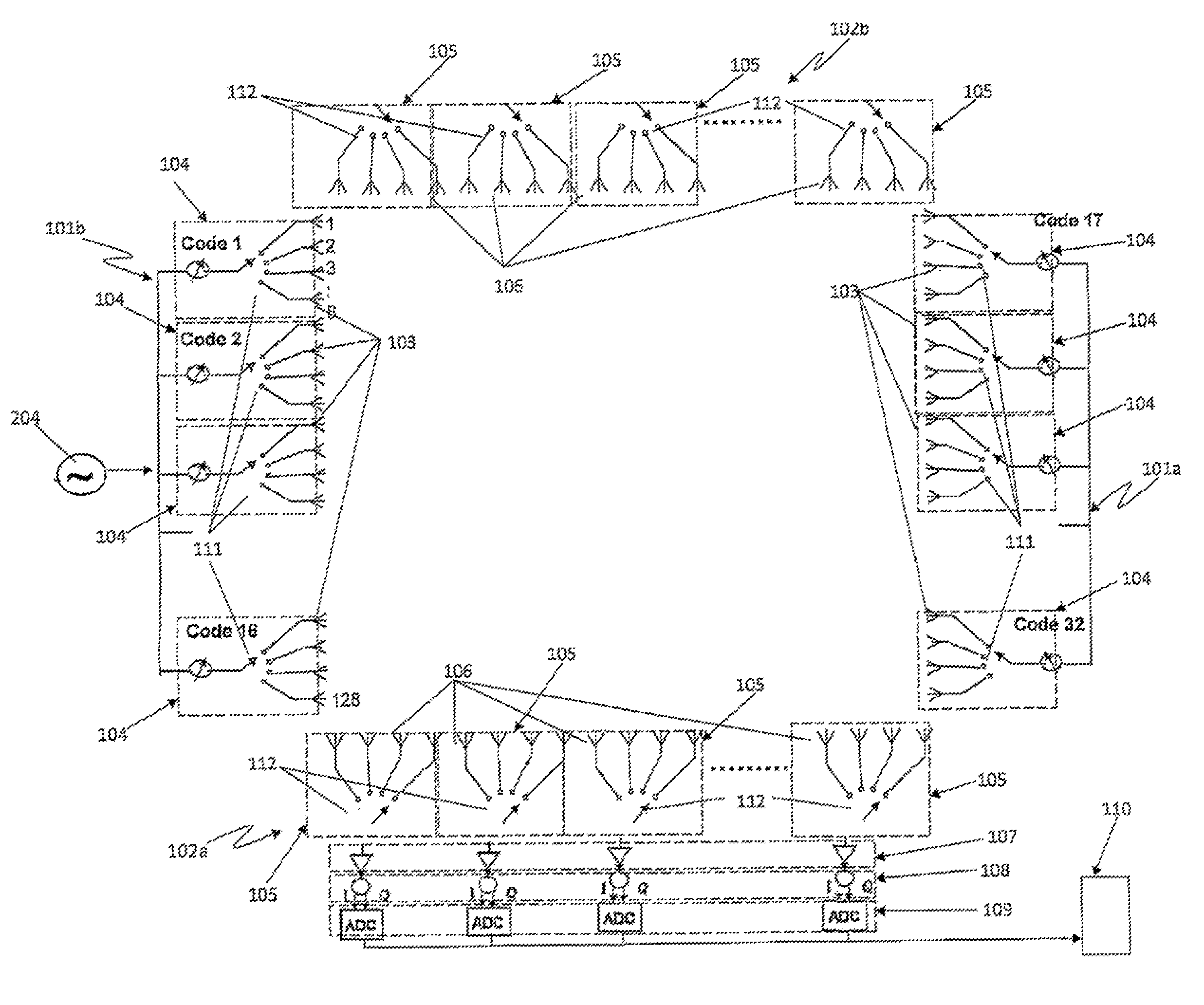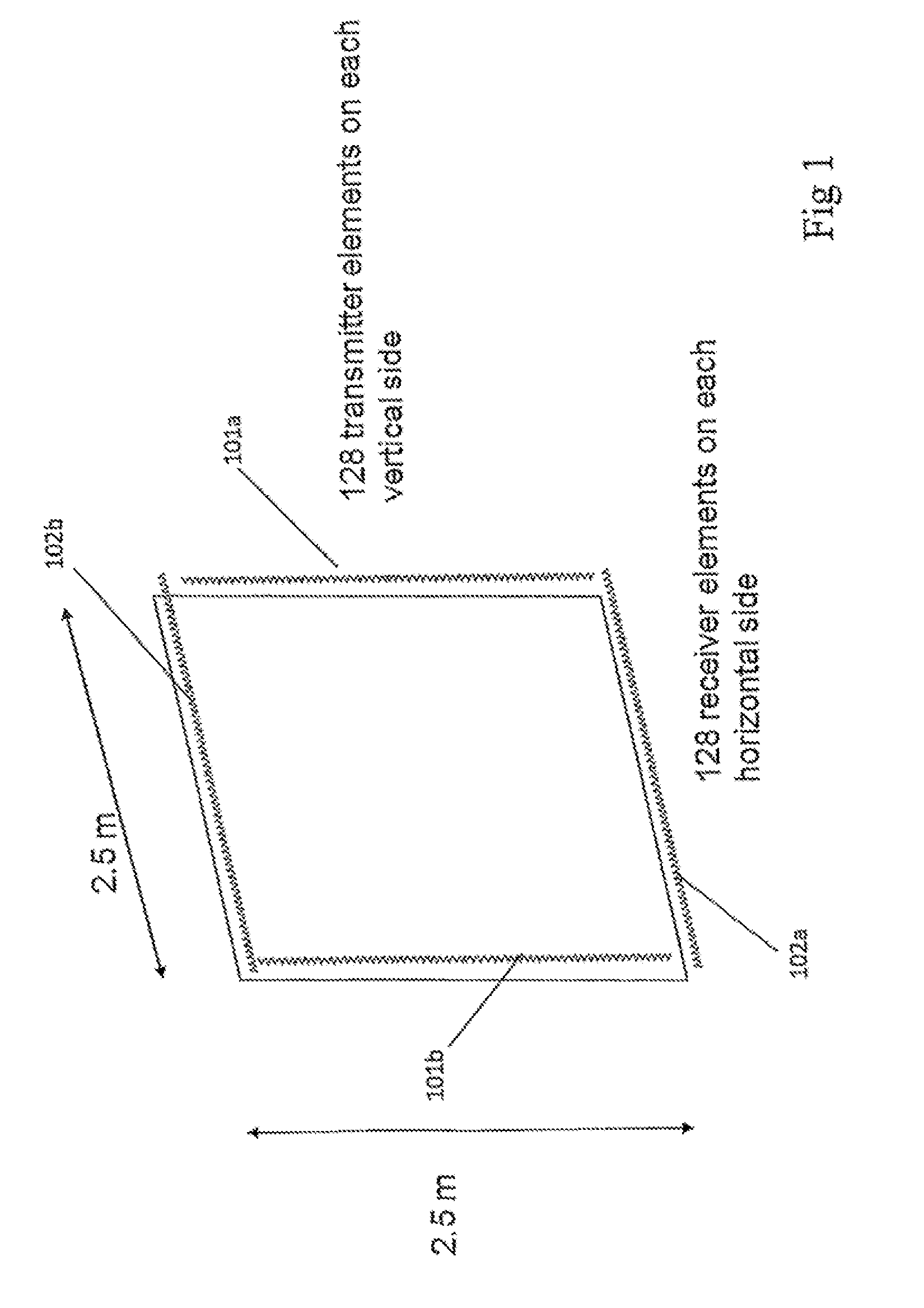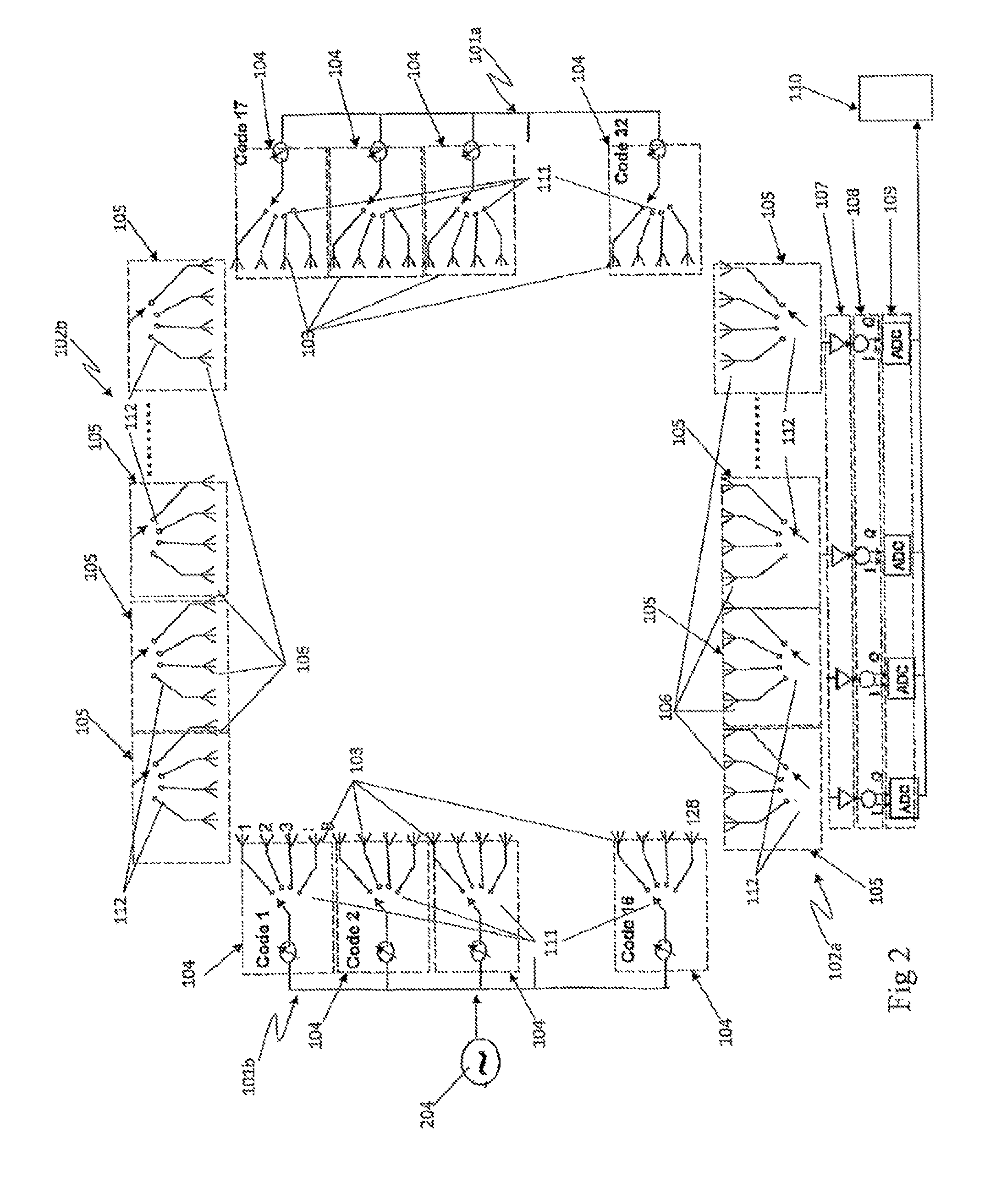Imaging system and method
a technology of imaging system and detector, applied in the field of radar imaging system and method, can solve the problems of inconvenient application, inconvenient processing, and inability to quickly adapt detectors to applications, and achieve the effect of improving range resolution
- Summary
- Abstract
- Description
- Claims
- Application Information
AI Technical Summary
Benefits of technology
Problems solved by technology
Method used
Image
Examples
Embodiment Construction
[0102]An example of one possible configuration of an imaging system according to one embodiment of the present invention is shown in FIG. 1. In this particular example the system is composed of a square perimeter antenna array 2.5×2.5 m nominal size. Disposed along each vertical edge 101a, 101b of the array is a set of N transmitter elements, with a set of M receiver elements being disposed along each horizontal edge 102a, 102b of the array. In this case each vertical transmitter sub-arrays contains 128 transmitter elements, likewise each horizontal receiver sub-arrays contains 128 receiver elements.
[0103]While the array shown in FIG. 1 is a square parameter array it will be appreciated by those skilled in the art that the array may be in the form of any suitable shape where multiple combinations of transmitter / receiver pairs allow the formation of a filled aperture. Such configurations might include a rectangle, parts of a rectangle forming a cross or L shape, a circle, octagon, or...
PUM
 Login to View More
Login to View More Abstract
Description
Claims
Application Information
 Login to View More
Login to View More - R&D
- Intellectual Property
- Life Sciences
- Materials
- Tech Scout
- Unparalleled Data Quality
- Higher Quality Content
- 60% Fewer Hallucinations
Browse by: Latest US Patents, China's latest patents, Technical Efficacy Thesaurus, Application Domain, Technology Topic, Popular Technical Reports.
© 2025 PatSnap. All rights reserved.Legal|Privacy policy|Modern Slavery Act Transparency Statement|Sitemap|About US| Contact US: help@patsnap.com



